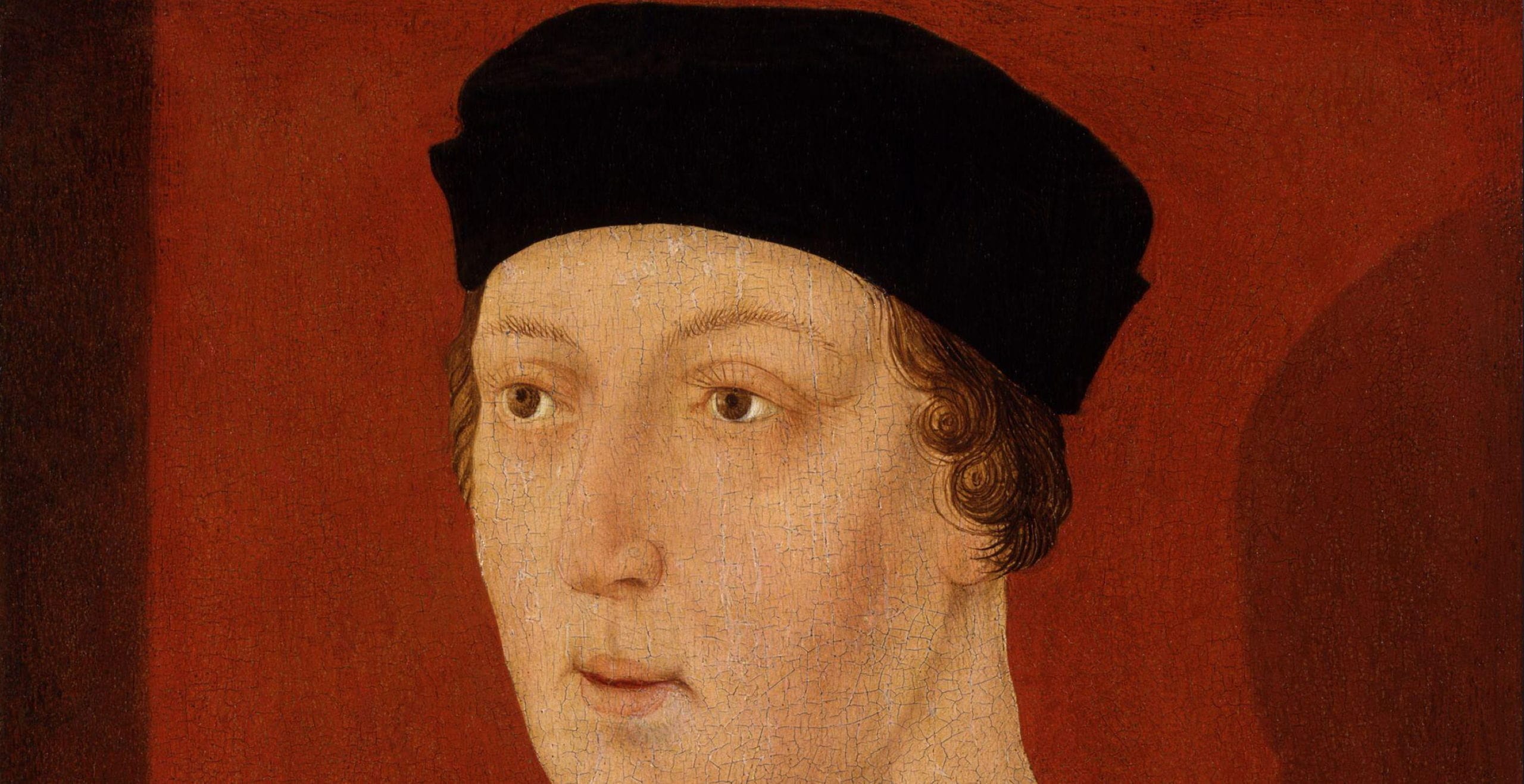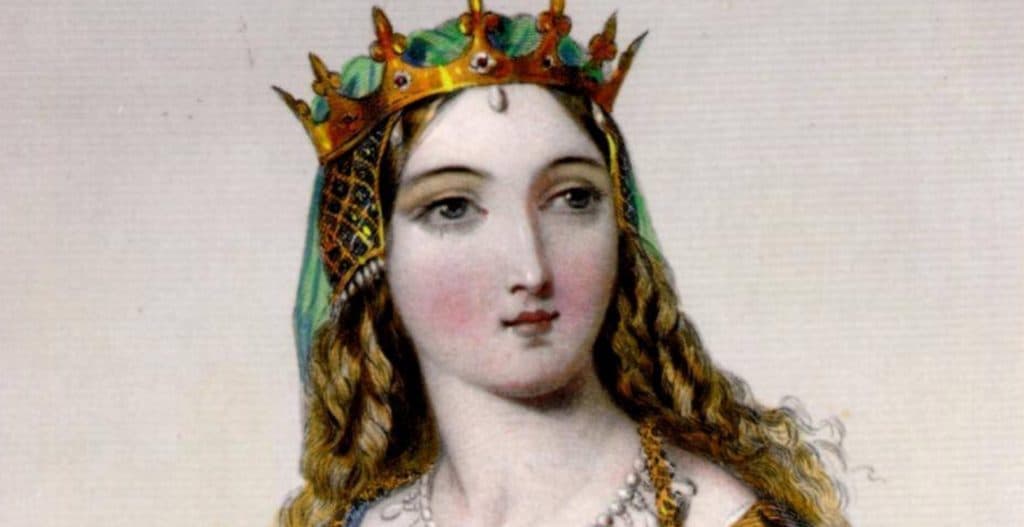A central figure in the War of the Roses, Elizabeth Woodville found herself on both the winning and losing side, as the battle between the Yorkist supporters and Lancastrians directly impacted not only her time as Queen consort but the fate of her two young sons known as “the Princes in the Tower”.

Elizabeth Woodville was born in 1437 at Grafton Regis, Northamptonshire and was the eldest daughter of Richard Woodville, 1st Earl Rivers and his wife, Jacquetta of Luxembourg. Whilst her father’s family were respectable and wealthy, they were not of the nobility, something which would prove to become an obstacle for Elizabeth’s marriage to King Edward IV. Meanwhile, her mother was from an aristocratic family; as the daughter of Peter I of Luxembourg, Count of Saint-Pol, she also was widow to John of Lancaster, Duke of Bedford (making her aunt to Henry VI). With such royal connections and lineage, Jacquetta was one of the most socially well-ranked women in England at the time.
As a result, Jacquetta’s marriage to Richard Woodville raised some eyebrows, as their marriage was not one of social equals. Nonetheless, the pair remained undeterred and they married in secret so as to avoid the necessary royal permission required by Jacquetta to marry Woodville. As no such agreement had been reached, the couple received a hefty fine and were only pardoned when Elizabeth was born.
Elizabeth was noted for her beauty and was sure to have a long list of suitors, the first of which was John Grey of Groby whom she married in 1452. The pair went on to have two sons together before Sir John Grey tragically died in battle, killed at the Second Battle of St Albans in 1461, representing the House of Lancaster.

Meanwhile, the Yorkist cause was growing more powerful and Elizabeth soon found herself in a perilous social position, returning to live with her parents in Grafton whilst her husband’s estates were seized by the Crown. Whether planned or by good fortune, Elizabeth’s next steps saw her have the opportunity to plead her case directly to King Edward who was hunting in the area.
Known as a womaniser, Edward appeared to be quite taken by Elizabeth’s notable beauty and as a result embarked on a secret liaison resulting in a clandestine marriage and subsequent crowning ceremony on 26th May 1465.

Such a union rattled those in the royal court. One person in particular who took great umbrage at the marriage was the Earl of Warwick, also known as “the kingmaker”. Warwick had been secretly arranging an alliance with the French which would have seen Edward IV marry a French princess. Elizabeth Woodville’s arrival on the scene scuppered his political machinations and made her a resented figure in court.
As soon as Elizabeth became queen, her family’s status grew alongside Elizabeth’s newly acquired power. In particular, her marriage proved very advantageous for her siblings and her children, angering those ambitious courtiers surrounding the monarch. To make matters worse, her father had been a Lancastrian, as was her deceased husband, leading many in the ruling House of York to find the marriage unacceptable. Nevertheless, Edward IV and his new queen went on to have ten children, with two sons and five surviving daughters. The Yorkist line seemed secure enough, however the rivalry was far from over.
A chasm had developed between the Earl of Warwick and Edward IV, ultimately leading to “the kingmaker” switching allegiances. Such was Elizabeth and her family’s unpopularity that she and her mother were even accused of witchcraft by George, Duke of Clarence, who was Edward IV’s brother.

In the end, Warwick and Clarence ended up conspiring together in revolt, before fleeing to France. The ensuing conflict and Warwick’s new allegiance to the Lancastrian Queen Margaret of Anjou had a profound effect, particularly on Elizabeth, as both her father and brother were executed at the hands of Warwick in 1469 after the Battle of Edgecote.
On 3rd October 1470, Edward IV was deposed in favour of Henry VI, Margaret’s husband who ascended the throne in his place. Edward and Elizabeth’s exile proved temporary however, as the following year Warwick faced defeat at the Battle of Barnet leading to Henry VI’s demise and the restoration of Edward to the throne on 11th April 1471.
In this increasingly febrile atmosphere, Elizabeth had sought sanctuary in Westminster Abbey and given birth to her son Edward, the future monarch. With Edward IV once again king, Elizabeth’s status was re-established, however her position would soon come under scrutiny when only two years later on 9th April 1483 Edward passed away leaving Elizabeth a widow for the second time.
Elizabeth was now incredibly vulnerable to outside forces as there were those around her in court that had plans to usurp her and most importantly, her son’s right to be king. For a brief period, her son became Edward V however his uncle, Richard of Gloucester (the former king’s younger brother) had other ideas.
He seized the young king Edward, his half-brother Richard Grey as well as Elizabeth’s brother, Lord Rivers. Edward V was taken to the Tower of London.
Meanwhile, Elizabeth found sanctuary at Westminster Abbey with her other young son Richard, Duke of York. His security however was far from guaranteed, as his uncle Richard, Duke of Gloucester felt that the young prince also needed to be removed in order to guarantee his position as king. Thus, Elizabeth was forced to give up her son, who subsequently joined his brother in the Tower of London.

With the two princes (Richard, Duke of York) and Edward (now technically Edward V) out of the way, Richard made his bid for the throne. In order to legitimise this takeover, he claimed that Edward IV’s marriage to Elizabeth was bigamous and therefore the two princes were illegitimate. Based on this rumour, Richard was rightfully king and was subsequently crowned King Richard III, leaving Elizabeth, the dowager queen to be stripped of her lands and was now referred to as “Dame Elizabeth Grey”.
The battle for the crown however was far from over. Whilst forced into sanctuary, Elizabeth was determined to restore the throne for her son. This plan however fell apart after it was suspected but never confirmed that the “Princes in the Tower” were now dead. Having lost her two sons, who were presumed to have been murdered at the hands of their rivals, Elizabeth was determined to oust Richard III and remained politically active.
She subsequently allied herself with Henry Stafford, Duke of Buckingham (previous ally to Richard III) and Margaret Beaufort (Henry Tudor’s mother). Together they collaborated to ensure that Henry Tudor, the great-great-great grandson of Edward III, would claim the throne. In order to do this, the two women agreed that uniting the families would bring an end to the warring factions and consolidate power under the umbrella of one powerful royal family line, the Tudors.
In order to do this, Margaret Beaufort and Elizabeth agreed that Henry Tudor should marry Elizabeth’s eldest daughter, Elizabeth of York who was, as a result of the death of her brothers, heiress to the House of York. In December 1483, Henry Tudor swore an oath in Brittany, agreeing to this plan.

Meanwhile, Richard III had sworn an oath in public that Elizabeth and her daughters were now safe and their positions secure and were therefore allowed to return to the royal fold, seemingly reconciled with the new king for all intents and purposes. As the plotting continued behind the scenes Henry Tudor, who was in exile in France, made his first attempt to invade England in 1483 however he was driven back by a storm in the Channel.
His second attempt would come two years later when he and his army arrived on the coast of Wales on 7th August 1485, travelling inland with increasingly large number of followers joining his army as they marched to London.
The invading army was met by Richard and his supporters at Ambion Hill, just south of Market Bosworth in Leicestershire. The conflict which ensued became known as the Battle of Bosworth Field and was one of the most significant in royal history, as it not only ushered in the Tudor dynasty but also ended the Plantagenet dynasty.

The warring factions of Lancaster and York had their final showdown on 22nd August 1485, with a victory cemented by the Lancastrians, ensuring that Henry Tudor, Earl of Richmond became monarch when his opponent, Richard III died on the battlefield.
The War of Roses was finally over and the victor was subsequently crowned King Henry VII. Very shortly afterwards he stayed true to his oath and married Elizabeth’s daughter, Elizabeth of York.
With their alliance securing the fate of both families, Elizabeth Woodville’s titles were restored and she was named the Dowager Queen. Whilst her title had been restored however, Elizabeth would be forced to acquiesce to the power of Lady Margaret Beaufort.
Withdrawing to Bermondsey Abbey, her final five years would be spent in relative obscurity until on 8th June 1492 she passed away and was laid to rest at Windsor Castle alongside her husband, King Edward IV.
Elizabeth Woodville lived an eventful life as a young widow who married a king and in doing so found herself at the centre of an ongoing feud between the Houses of York and Lancaster. The War of the Roses defined many key figures in this time, none more so than Elizabeth who saw her crown taken and then restored, lost her sons to the ambitions of Richard III and was forced to conspire in order secure her daughter’s future as the head of a new Tudor dynasty.
Jessica Brain is a freelance writer specialising in history. Based in Kent and a lover of all things historical.
Published: 26th February 2024











